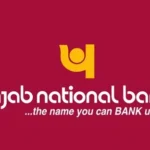What is CHG full form in banking?
The CHG full form in banking is Charge. It is a legal process by which a lender acquires rights to a borrower’s assets as collateral for a loan. This is frequently employed in secured lending, in which a bank or financial institution places a charge on the borrower’s assets, assuring that if the borrower fails to repay the loan, the bank can take or liquidate those assets to recover the debt. A charge does not transfer ownership of the assets to the lender, but rather grants legal permission to claim them in the event of default.
Types of Charges:
Charges are normally classified into two types: fixed and floating. A fixed fee is levied on specified, identifiable assets such as property, machinery, or cars. The borrower may not sell or dispose of these assets without the lender’s permission. A floating charge, on the other hand, applies to a broader group of assets that may fluctuate over time, such as inventory or receivables. The borrower can manage these assets as long as they meet their financial obligations.
Benefits of CHG in banking:
The creation of a charge provides the lender with a higher level of security, particularly in big loans or corporate finance, where the risk of default is significant. It also provides legal protection in the event of bankruptcy, as lenders holding a lien on assets are frequently given priority over unsecured creditors. Charges are often recorded with appropriate authorities, such as company registries or land registries, to formalize the lender’s rights.














